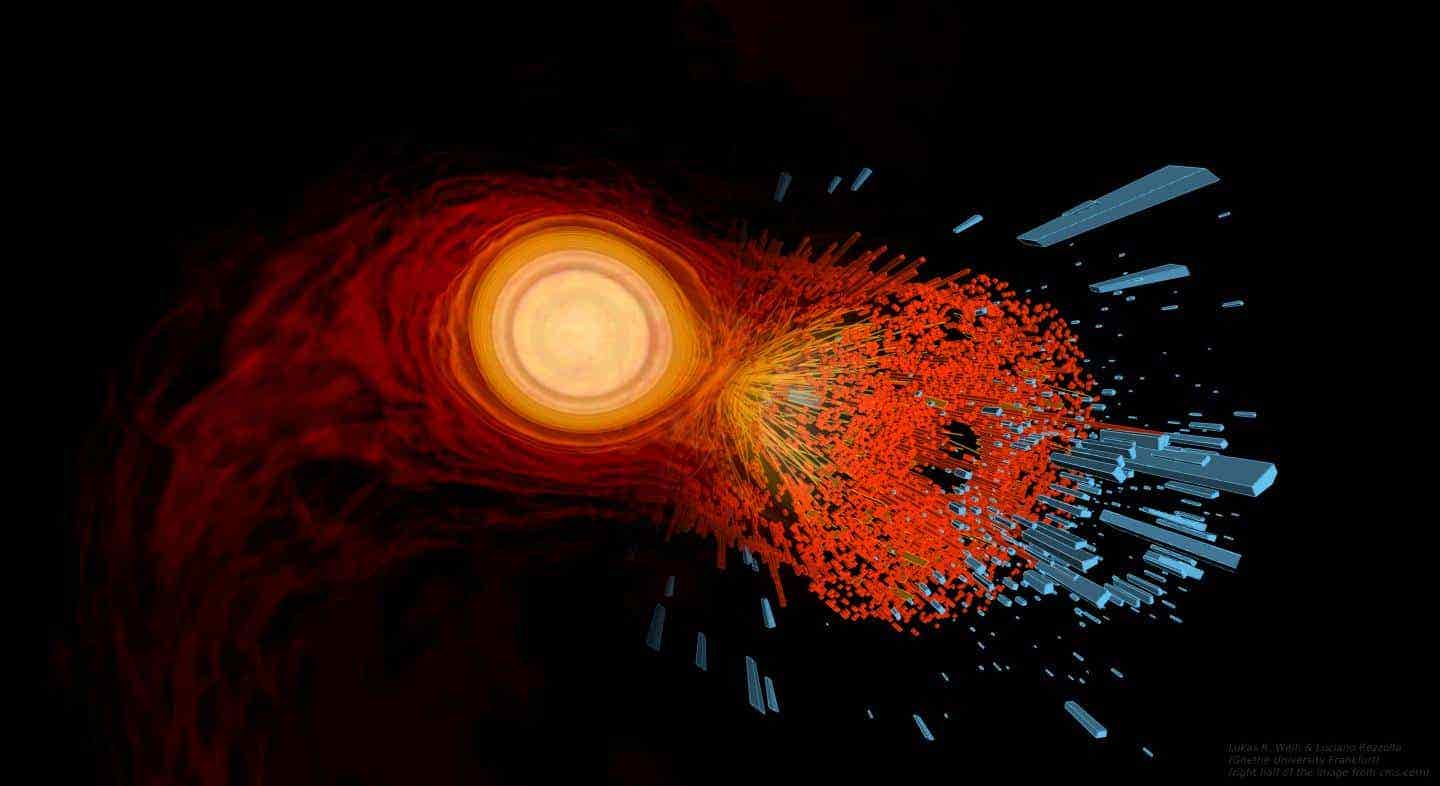Scientists discover new particle made entirely of nuclear force
For decades, scientists have pursued the elusive “glueballs,” exotic particles composed entirely of gluons.

For decades, scientists have pursued the elusive "glueballs," exotic particles composed entirely of gluons. Gluons are the "sticky" particles responsible for holding nuclear particles together. Glueballs, however, are notoriously unstable and can only be detected indirectly through their decay, a process not yet fully understood. Now, it appears that this long-standing scientific quest has reached a significant milestone.
Professor Anton Rebhan and Frederic Brünner from TU Wien (Vienna) have made a breakthrough in calculating glueball decay using a novel theoretical approach. Their results align remarkably well with data from particle accelerator experiments, providing strong evidence that a resonance known as "f0(1710)" could indeed be the long-sought glueball.
Forces as Particles
Protons and neutrons are made of even smaller particles called quarks, which are bound together by the strong nuclear force. "In particle physics, every force is mediated by a special kind of force particle, and the force particle of the strong nuclear force is the gluon," explains Anton Rebhan.
Gluons are more complex than photons, which mediate electromagnetic forces. Unlike photons, which are massless and do not interact with each other, gluons do interact with themselves. This interaction allows for the possibility of particles composed entirely of gluons, known as glueballs.
The concept of glueballs was first proposed in 1972 by physicists Murray Gell-Mann and Harald Fritsch, shortly after the theory of quarks and gluons was established.
Several candidate particles have been observed in particle accelerator experiments, but there has been no consensus on whether any of these could be glueballs. The challenge lies in the fact that glueballs are too short-lived to be detected directly and must be identified by studying their decay patterns.
Related Stories
"Unfortunately, the decay pattern of glueballs cannot be calculated rigorously," says Rebhan. Previous models suggested two candidates for glueballs: the mesons f0(1500) and f0(1710). While f0(1500) was initially considered the more likely candidate, f0(1710) has a higher mass, which aligns better with computer simulations.
However, f0(1710) decays into many heavy quarks, known as "strange quarks," which seemed improbable since gluon interactions typically do not distinguish between quark masses.
Rebhan and Brünner have made significant progress by employing a different theoretical approach. They utilized the fundamental connections between quantum theories describing particle behavior in our three-dimensional world and certain gravitational theories in higher-dimensional spaces. This approach allows them to answer quantum physical questions using tools from gravitational physics.
"Our calculations show that it is indeed possible for glueballs to decay predominantly into strange quarks," says Rebhan. Surprisingly, their calculated decay pattern into two lighter particles matches the decay pattern measured for f0(1710). Additionally, other possible decays into more than two particles have also been calculated.
These alternative glueball decays have not yet been measured, but new data from upcoming experiments are expected to shed light on this theory. Two experiments at the Large Hadron Collider at CERN (TOTEM and LHCb) and one accelerator experiment in Beijing (BESIII) are expected to provide new insights within the next few months.
"These results will be crucial for our theory," says Rebhan. "For these multi-particle processes, our theory predicts decay rates that are quite different from the predictions of other, simpler models. If the measurements agree with our calculations, this will be a remarkable success for our approach."
Confirming these predictions would provide overwhelming evidence that f0(1710) is indeed a glueball. Moreover, it would demonstrate the power of higher-dimensional gravitational theories to answer questions in particle physics. This would be another significant triumph for Einstein's theory of general relativity, which celebrates its 100th anniversary next month.
As the scientific community awaits further experimental results, the prospect of confirming the existence of glueballs offers a thrilling glimpse into the fundamental forces that govern our universe.
The study can be found at: Frederic Brünner et al. "Nonchiral Enhancement of Scalar Glueball Decay in the Witten-Sakai-Sugimoto Model," Physical Review Letters (2015).
For more science news stories check out our New Discoveries section at The Brighter Side of News.
Note: Materials provided above by The Brighter Side of News. Content may be edited for style and length.
Like these kind of feel good stories? Get the Brighter Side of News' newsletter.



